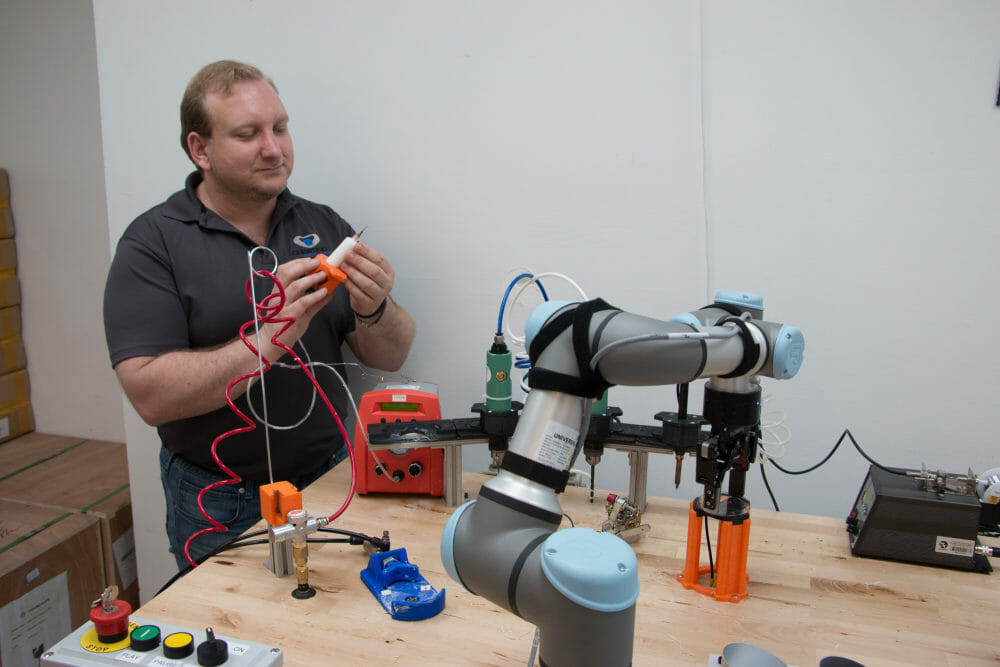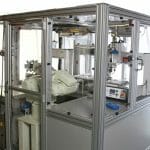If you’re thinking about automating and you’re not sure where to start, here is a quick guide for your first steps towards automating your manufacturing processes.
- Decide on the processes you’d like to automate
Look at your manufacturing facilities and identify the different processes you would like to automate. Start with the simplest and most cost efficient project where minimal changes need to be made to the production line. Look for manual processes that are repetitive, and don’t require on the spot decisions, critical thinking or human dexterity. Machine tending and pick-and-place operations are a good place to start.
Choosing the simplest and most cost efficient project will allow you to achieve a high success rate and keep your investment to a minimum. It will also be easier to train your workers to operate the machines.
2. Decide whether mechanical components within the processes need to change
When you automate a process, it doesn’t necessarily mean a robot with a gripper will be deployed. Often manufacturers need to make changes to the mechanical components around the robot so they’re able to consistently feed products to the robot for handling. It’s important to decide whether such changes will need to be made to your production. If so, think about what these changes will look like for you and whether or not there will be any additional costs if you decide to automate. If you’re prepared to incur additional costs after the initial investment, you’ll receive benefits and great value in the long term.
3. Determine available space on the factory floor
Look at the processes you would like to automate and determine whether you have the space available on the factory floor to deploy the robot. Consider your needs now and in the future. If space is tight, look for solutions that are small, flexible, easy to implement and that don’t take up a lot of room. Today there are compact and lightweight solutions available that will fit in the smallest of spaces and operate efficiently and safely. This means you don’t have to wait until you’re in a bigger factory to automate. With solutions like collaborative robots, you can start now, save money on property costs, while at the same time increasing your production, growing your business and being the leader in your market.
4. Choose flexible automation solutions
If you have a low-mix high volume manufacturing environment look for flexible automation solutions. You may be producing the same product now however in the future things may change which is why it’s important to look at solutions that will grow with your business. Automation will bring you long-term value if you adopt flexible solutions that can be used in different areas of your business. You will receive a much greater return on your investment if you look at your short-term and long-term business goals.
For businesses with a high-mix low volume production, flexible solutions are critical because they will allow you to meet the changing needs of your customers and make it easy to reconfigure your workspace quickly for the production of different products and processes in your business.
5. Keep your workers safe
Worker safety is critical when you integrate robots into a production. Most automation solutions require safety fencing so the robot can operate in a closed off area away from workers keeping them safe. Keep in mind that fencing can increase costs, it takes up a lot of space and having fenced systems/solutions can make your manufacturing processes inflexible. Consider solutions that don’t require safety fencing (subject to a risk assessment) for example collaborative robots, which have certified safety measures allowing them to work alongside workers safely. Unfenced solutions bring many benefits including the ability for workers to stand in for the robot to prevent downtime if the need arises.
6. Consider the value of automation
When considering your options think about your future needs. Look for solutions that will create efficiencies in your business now and that will grow with your business. Automation isn’t about reducing staff numbers; it’s about integrating new technologies that will support and work alongside your staff.
Automation will allow you to create and grow a sustainable business, be more competitive in your market, reduce your production costs and allow you to consistently produce a higher quality product time and time again. You will receive short-term and long-term benefits though automation that will maximize your return on investment and bring immense value to your business both in the short-term and the long-term.








